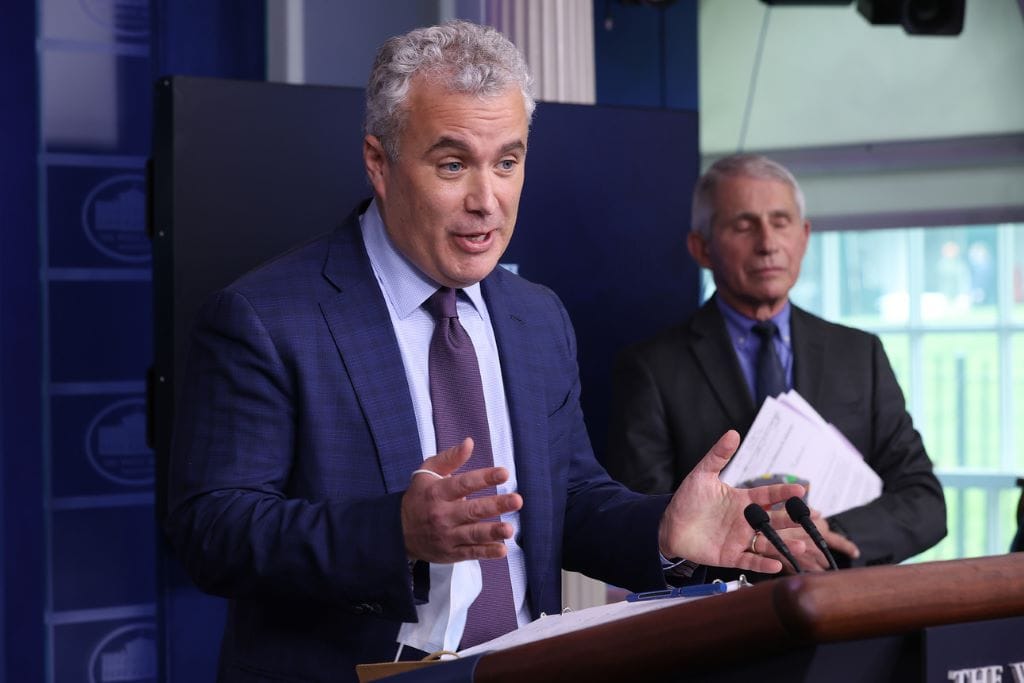White House to Announce State Broadband Deployment Allocations Monday Morning
State broadband officers are prepared to leverage BEAD money to connect all Americans to the internet.
Teralyn Whipple

WASHINGTON, June 26, 2023 – President Joe Biden, Vice President Kamala Harris and Commerce Secretary Gina Raimondo will announce more than $40 billion in infrastructure funding to all 50 states, territories and the District of Columbia through the Broadband Equity Access and Deployment program on Monday.
The White House compared Monday’s announcement to the Rural Electrification Act of 1936, which delivered electricity to every home in America.
The “unprecedented investment in broadband is going to finally close the digital divide,” White House Chief of Staff Jeff Zients said Friday in a press call embargoed until Monday morning.
Don’t miss the discussion of broadband, semiconductor manufacturing and green energy at Broadband Breakfast’s Made in America Summit on Tuesday, June 27.
The announcement, which is expected to be made at 11:45 a.m., according to the Commerce Department, is part of a broader goal to connect all Americans to the internet, Zients said.
See the Biden Administration’s Briefing Document, “Delivering Internet to All Americans.”
Every state will have six months to submit initial proposals to the National Telecommunications and Information Administration that outlines what they will do with the funds, said senior administration officials. Once plans are approved, states will be able to access up to 20 percent of the allocated funds.
States will then begin to execute their competitive grant processes for subgrantees. Final plans will then be submitted for approval, upon which states will receive their remaining allocation.
Although the timeline for BEAD is long, efforts in other federal grant programs, including the NTIA’s Middle Mile program and Capital Projects Fund, are already beginning to take effect, said a senior administration official. “The BEAD funding is intended to finish the job” of connecting every American to the internet by 2030.
The BEAD program is the largest of three programs funded under the $65 billion Infrastructure Investment and Jobs Act and funds last mile infrastructure to connect to unserved and underserved communities.
The IIJA defines “unserved” as homes that lack access to broadband at 25 Megabits per second (Mbps) download and 3 Mbps upload. “Underserved” homes are defined as those that lack access to 100 Mbps down and 20 Mbps up.
State broadband office response
Funds will be distributed to states, which will be responsible for connecting unserved and underserved communities. The announcement has been highly anticipated for at least 5 months with several states, including Louisiana, Maine, and Utah, having already released state 5-year broadband and digital equity plans.
Idaho Broadband Program Manager Ramon Hobdey-Sanchez said of the announcement that “the timing couldn’t be better, as Idaho wraps up with the state’s 5-year action plan and begins work on the initial proposal. The communities and residents of Idaho are energized and ready for the work ahead.”
The Indiana Broadband Office is eagerly awaiting Monday’s announcement, State Broadband Director Earnie Holtrey told Broadband Breakfast. “We stand ready to leverage BEAD, along with ongoing state efforts, to connect every remaining unserved Indiana resident to affordable, reliable broadband.”
BEAD allocation estimates
More than half of states are expected to see larger allocations in the Broadband Equity Access and Deployment program allocations based on the updated national broadband map compared to earlier estimates on older maps, reported business consulting firm Cartesian report Tuesday.
Allocation levels to eligible entities are based on the second version of the Federal Communications Commission’s national broadband map. Changes in the data between the first and second version of the map are the result of availability and location data challenges. The new version, released earlier this month, identifies nearly 330,000 new unserved locations and updates availability data for more than 3 million locations.
The report found that 23 states will see less funding according to updated data on national maps. The state expected to see the largest increase is Nebraska, which was originally estimated to receive $210 million and is now expected to receive $633 million.
Cartesian estimates that Texas will be the largest recipient of funds, with close to $3.5 billion. California and Virginia are the next highest projected awardees, both of which have higher estimated funding allocations based on version two of the map compared to the first version.
The report also estimates that the total provider match will be $21 billion, which will equate to about $2,898 per location. According to its research, Cartesian anticipates that BEAD funding and matches will be sufficient to meet program goals of making broadband available nationwide.








